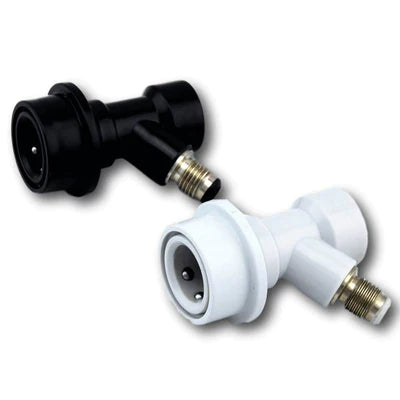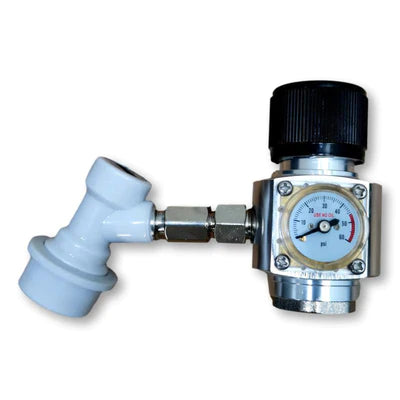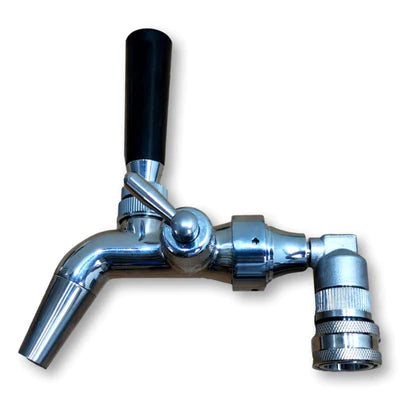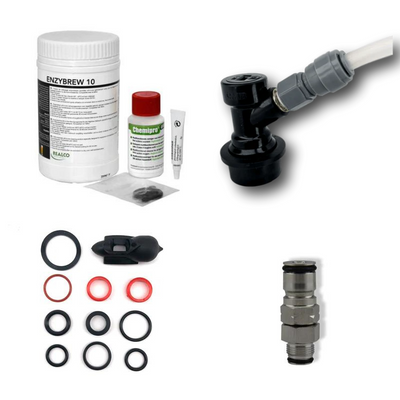Free & Fast Shipping Options In EU
Free & Fast Shipping Options In EU
About
Kegging Gear
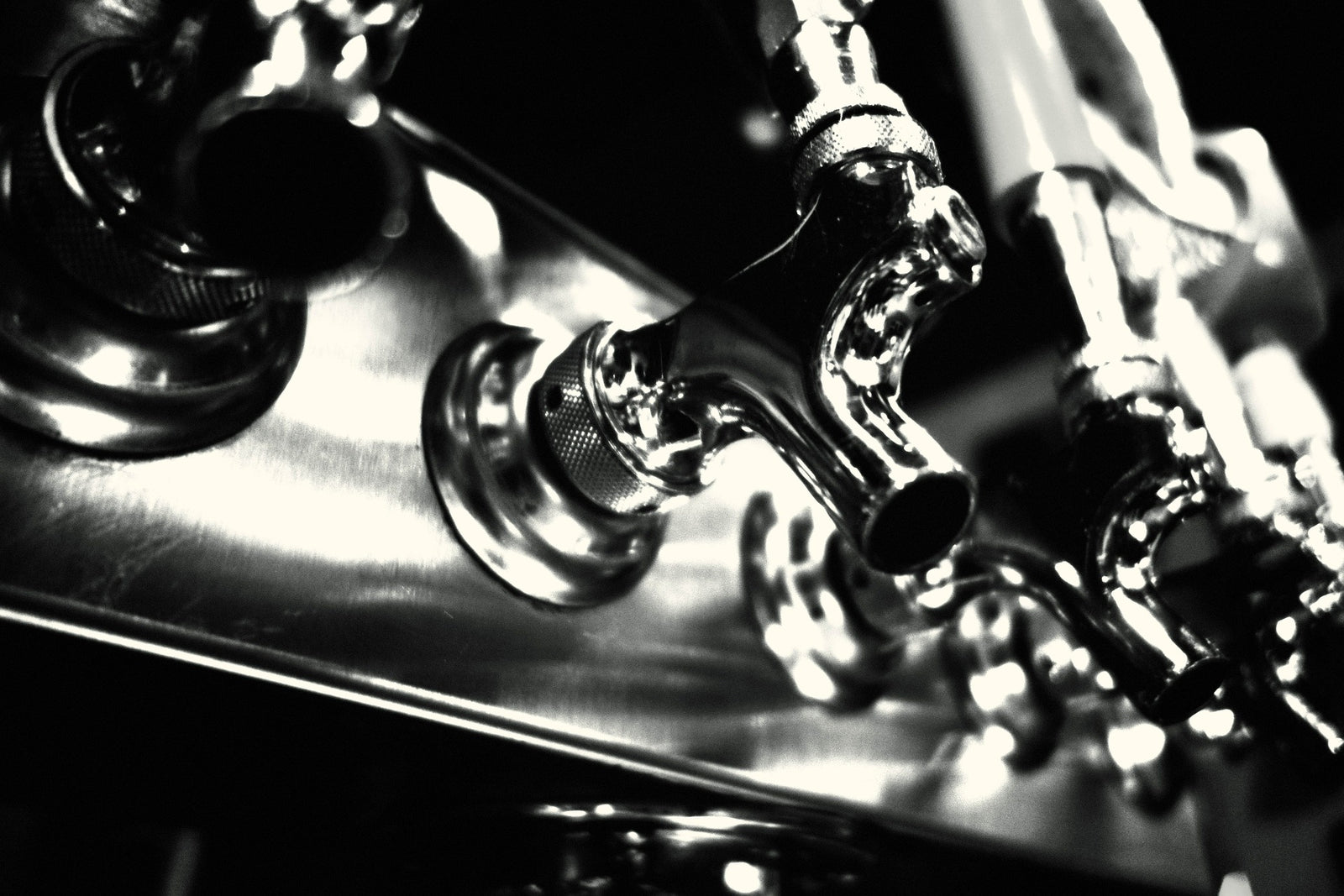
3 Common Kegerator Problems & How to Fix Them
February 14, 2019 6 min read
Kegging your homebrew is fantastic; it saves time, it’s less work, your beer is ready to drink sooner and having beer on tap at home is awesome. However, if you’re new to kegging your homebrew, you might run into a few problems the first time around. Kegerator problems can be frustrating, but if you know what to look out for, the fix is normally relatively simple.
This brief guide will take a look at the 3 most common kegerator problems, going over the typical symptoms and showing you the cure for the actual issue. So, if you’re getting foamy beer from your kegerator, or need to know how to fix flat beer, take a look below.
How to Fix Flat Beer

So, you’ve filled your first keg, cold crashed it and force carbed it, but when you come to pour that first exciting pint, it’s flat and lifeless; disappointment ensues. Fortunately, flat beer is normally very easy to fix, and can only really come about from the following problems.
Your Beer is Under Carbonated
This is the most common reason for flat and lifeless beer, but it’s easy to fix. Typically, over eager homebrewers try their beer before it’s finished carbonating. Simply hook up the gas and leave it for a few more days. It’s always worth using carbonation calculators or charts to properly carbonate your beer to the correct level, and it’s important you know the temperature in your kegerator.
Another issue is that your keg may have a gas leak, so not as much co2 is being absorbed into the beer as should be. Gas can only leak from the regulator, an unsealed lid, or the beer and gas posts. Check these by spraying no rinse sanitiser on them — if bubbles start forming, you’ve got a leak. In this case, purge the tank, check the o-rings and re-fit everything.
Your Beer is Too Cold

The colder beer is, the more co2 it absorbs. If your kegerator is too cold, your beer might in fact be properly carbed, but the co2 is all in solution. There may not be any foam when you pour, but you will feel the prickle of carbonation as you taste your beer. In this case, raise the temperature of your kegerator to a serving temperature of between 8 and 13℃ depending on the beer style.
There’s Too Much Resistance in the Beer Line
A successful kegerator has to be balanced. What this means is that the pressure in the keg, is equalized in the beer line as it travels to the tap. The length and diameter of the beer line play an important role in creating the necessary resistance required for the perfect pour. If your beer is pouring slow and flat, the issue is most likely in the line.
Lines that are too long or too thin, or both, will slow the flow of beer down too much, and knock too much co2 out of solution before it reaches the tap. So, as you pour, your beer will be less carbonated than it is in the keg. To fix this, be sure to balance your system properly, use shorter runs of beer line, or a wider hose.
Foamy Beer From Your Kegerator
 It’s good to know how to fix flat beer, but the majority of kegerator problems result in foamy beer. This can be incredibly annoying as you pour glass after glass of foam, and end up pouring most of your beer down the drain. This common problem is normally caused by the following issues.
It’s good to know how to fix flat beer, but the majority of kegerator problems result in foamy beer. This can be incredibly annoying as you pour glass after glass of foam, and end up pouring most of your beer down the drain. This common problem is normally caused by the following issues.
Not Enough Resistance in the Line
 If you’re getting foamy beer from your kegerator, the most common problem is an unbalanced system. Most kegerator problems stem from this issue, so if you get this right, you’re in a good place! Often, the lines are too short or too wide to slow the flow of beer down enough before it reaches the tap, leading to a frothy pint.
If you’re getting foamy beer from your kegerator, the most common problem is an unbalanced system. Most kegerator problems stem from this issue, so if you get this right, you’re in a good place! Often, the lines are too short or too wide to slow the flow of beer down enough before it reaches the tap, leading to a frothy pint.
A good rule of thumb is for a keg at 12 psi serving pressure, between 3.5 and 4 metres of 6 mm beer line should do the trick. Your system may differ, so buy extra hose and experiment with it until you get a good flow.
You Over Carbonated Your Beer
It’s easy to over carbonate your beer, especially if you don’t have an accurate idea of the temperature inside your kegerator, or you use the shake and carbonate method of carbonating your beer. You’ll know you’ve done it when all you get is foam coming out of the tap, when normally it’d pour nicely. An over carbonated keg can also be detected by looking at the beer line for small bubbles coming up from the keg, as co2 tries to escape the head space.
To fix this, unhook the co2 and purge the head space. Leave the gas unhooked, and allow the dissolved gas in your beer to escape and fill up the head space, which typically takes a couple of hours or so. Hook up your gas at serving pressure and try again. If it’s still over carbonated, repeat the process until it flows normally.
Your Beer is Too Warm
 As your beer gets warmer, more co2 is knocked out of solution, resulting in foam. Simply adjust the temperature in your kegerator to proper serving temperatures of between 8 and 13℃. Temperature is more of an issue in kegerators in which the beer line leaves the refrigerated area, i.e. when running into a tower.
As your beer gets warmer, more co2 is knocked out of solution, resulting in foam. Simply adjust the temperature in your kegerator to proper serving temperatures of between 8 and 13℃. Temperature is more of an issue in kegerators in which the beer line leaves the refrigerated area, i.e. when running into a tower.
As beer sits in the line, it warms up to room temperature, causing the first beer out of the tap to be a foamy mess. A chilled tower is needed, and can be implemented by recirculating cold water up and down it, alongside the beer line.
Worn Out O-Rings
Before filling your keg, it’s wise to check all of your o-rings for tears or other signs of damage. If you forgot to do this, and your beer is foamy, one cause could be a worn o-ring on the dip tube. A tell-tale sign is when bubbles appear in the beer line, rising up from the keg. This is co2 from the head space escaping through the damaged seal and into the beer in the line. To fix, depressurize the keg, remove the beer post and dip tube, and fit a new o-ring.
Your Serving Pressure is Wrong
 The ideal serving pressure should be between 10 and 12 psi, though some styles demand lower and some higher. Typically, 12 psi works well. If your serving pressure is too high, it can pump excess co2 into the keg and lead to foaming. Check your regulator and adjust as required.
The ideal serving pressure should be between 10 and 12 psi, though some styles demand lower and some higher. Typically, 12 psi works well. If your serving pressure is too high, it can pump excess co2 into the keg and lead to foaming. Check your regulator and adjust as required.
If your serving pressure is too low, you may notice air pockets and bubbles in the beer line, causing foaming. Increase the serving pressure to ensure a solid flow.
Dirty Lines
A build up of dirt can also lead to foamy beer, with the dip tube, beer line, beer post and tap being typical hot spots. As beer flows through the system, it hits old hop or yeast particles and build-ups. This forces co2 out of the beer, causing an excess of foam.
Clean everything thoroughly each and every time, using a PBW soak and thin wire brush for the dip tube. It’s best to clean as soon as you empty a keg, before dirt has a chance to solidify and build up.
There’s No Beer!
 The third and perhaps most worrying common kegerator problem is a lack of beer entirely. You have a full keg, but nothing coming out of the tap. Nine times out of ten, there are only two realistic causes for this.
The third and perhaps most worrying common kegerator problem is a lack of beer entirely. You have a full keg, but nothing coming out of the tap. Nine times out of ten, there are only two realistic causes for this.
You’re Out of Gas
 If you run out of co2, the pressure within the keg will force the last pint or so out, but after that your beer is going nowhere! Switch your gas supply, or refill your gas bottle and start serving once again. It’s best to have a spare canister for such occasions, so that you can continue serving and prevent co2 from escaping from your beer.
If you run out of co2, the pressure within the keg will force the last pint or so out, but after that your beer is going nowhere! Switch your gas supply, or refill your gas bottle and start serving once again. It’s best to have a spare canister for such occasions, so that you can continue serving and prevent co2 from escaping from your beer.
There’s a Blockage
If your co2 bottle is full, the only other problem could be a blockage somewhere in the system. This could be in the dip tube, tap, beer line, beer post or the disconnect. You may find blockages common in beers you’ve dry hopped in the keg, as hop particles get sucked into the dip tube. The best practice is to fit a filter onto your dip tube or cut the bottom centimetre off to avoid picking up sediment.
However, if you get a blockage halfway through a keg, don’t despair. Depressurize the keg and take the beer post off. Remove the dip tube and clean it with a long, thin wire brush, then soak the disconnect and beer post in boiling water, before cleaning with a toothbrush. You can also check the tap and clean if necessary. Alternatively, if you have spares, you can replace any parts you think may be causing the blockage, with the beer post and disconnect common problem areas.
Subscribe
Sign up to get the latest on sales, new releases and more …




